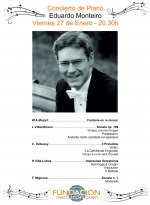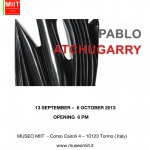An Art Scene by the Sea in Uruguay
This January, the Uruguayan musician, writer and visual artist Dani Umpi had a solo exhibition in Punta del Este, a resort town on Uruguay’s eastern coast. It was held at Galerie Xippas, a sleek showroom recently opened by the Paris-based dealer Renos Xippas. Hanging on the gallery’s walls were bright collages made of endless tiny scraps of magazine images, and shadow boxes containing bird faces wearing neon wigs, a vivid display of Mr. Umpi’s penchant for bizarreness and sarcasm.
Cutting-edge art and high-profile galleries are new to Uruguay, a country that is typically associated with modesty and restraint. But its eastern coast — particularly Punta del Este and the nearby villages of José Ignacio and Pueblo Garzón — has become a warm-weather winter hangout for wealthy globe-trotters. Between tanning at the beach and shimmying at poolside parties, they are scooping up local paintings and sculptures.
For much of the past century, Uruguay’s respectable but somewhat insular art scene was largely influenced by a geometric abstract style known as Constructivism, pioneered in the early 1900s by the painter Joaquín Torres García. In the new millennium, local artists became more experimental in an age of free-flowing information. “A few years ago I began to see that Uruguay started moving in a very interesting direction,” said Mr. Xippas, whose Xippas gallery is at Avenida Roosevelt and Calle Oslo; 598-4-248-9451; xippas.com. “There’s a new generation with fresh, ironic ideas.”

He plans to relocate to a bigger space set on a 15-acre plot halfway between downtown Punta del Este and José Ignacio. “I decided to open a gallery in Punta del Este before someone like Larry Gagosian came and did it,” Mr. Xippas said, referring to one of the most famous art dealers in the world.
Across the road from Mr. Xippas’s future establishment is the Fundación Pablo Atchugarry (Route 104, kilometer 4.5; 598-4-277-5563; fundacionpabloatchugarry.org), a nonprofit arts center run by Pablo Atchugarry, an artist from Montevideo who gained international recognition with a series of massive, intricately shaped abstract sculptures carved out of marble. The center hosts exhibitions by artists such as Le Corbusier and emerging local talents like Rita Fischer. His 27-year-old son, Piero, is the latest member of the coastal art crowd. Six months ago, he opened a gallery in Tierra Garzón, a 400-acre ranch that’s being transformed into a cultural destination. Aside from the Piero Atchugarry Gallery (Camino a Pueblo Garzón, kilometer 2; 917-858-2985; pieroatchugarry.com), which occupies a converted stable, the estate also has modern residences for visiting artists and a rural hotel that it still under construction.

Tierra Garzón is just outside Pueblo Garzón, a once-forgotten railroad town that came back to life when the chef Francis Mallmann opened a chic inn and restaurant there. But the area’s most remarkable transformation happened 23 miles south, in José Ignacio. This deceptively rustic peninsula, which just a decade ago was a slumbering fishing village, is now one of the most coveted vacation spots in South America. It’s also becoming an art hub, thanks in part to Alexander Vik, a Norwegian financier and art collector who built art-focused luxury resorts, Estancia Vik Jose Ignacio (Camino Eugenio Sainz Martínez, km 8; 598-9-460-5212; estanciavikjoseignacio.com) and Playa Vik Jose Ignacio(Calle de Los Cisnes y Calle Los Horneros; 598-9-460-5212; playavik.com). Both are decorated with a collection of locally made sculptures, murals and paintings. “We get a lot of requests from guests who want to buy art and meet the artists,” Mr. Vik said. The fashion designer Jason Wu, for example, took home an ink drawing by the mixed-media artist Marcelo Legrand after seeing his work in one of Estancia Vik’s suites.
A third property, Bahia Vik (Ruta 10, kilometer 183; 598-9-460-5212; bahiavik.com), is scheduled to open in September (when many of the area’s businesses reopen after a winter break) on a quiet beach on the south side of the peninsula. Given the enthusiastic reactions to the works at his other lodgings, Mr. Vik is outfitting this 37-room hotel with an art boutique.
Even some of the country’s more traditional galleries are making their way to the village. Galería de Las Misiones (Calle las Garzas; 598-4-244-4092;galeriamisiones.com), which owns a collection of 20th-century Uruguayan art, opened an exhibition room just steps from the beach. It’s the place to see and buy works by the likes of Pedro Figari, a post-Impressionist painter born in 1861, who became a key figure of Uruguay’s previous artistic heyday.
A version of this article appears in print on July 6, 2014, on page TR5 of the New York edition with the headline: Where the Art Scene Is on Point
http://www.fundacionpabloatchugarry.org/en/853bddeabe8381/news/an-art-scene-by-the-sea-in-uruguay





